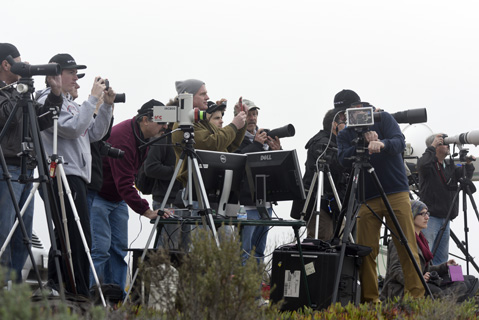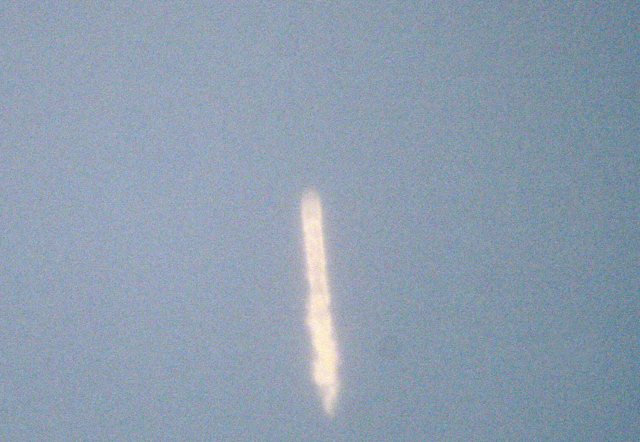SpaceX Landing: Close, but No Cigar
Rocket Tips and Explodes on Drone Barge

The thick fog that made for a loud but unspectacular rocket launch Sunday from Vandenberg Air Force Base may also have contributed to the failed landing of the SpaceX rocket on a floating barge 200 miles off the coast. “Falcon lands on droneship, but the lockout collet doesn’t latch on one [of] the four legs, causing it to tip over post landing,” tweeted SpaceX CEO Elon Musk after releasing dramatic video footage of the rocket touching down, collapsing, and exploding. “Root cause may have been ice buildup due to condensation from heavy fog at liftoff.”

The morning launch — first and foremost a science mission that successfully deposited a U.S.-European ocean-monitoring satellite
into orbit — was the latest attempt by the private space company to reduce launch costs by reusing rockets rather than letting them fall into the ocean. Last month, SpaceX made history when it landed one of its Falcon 9 rockets at Cape Canaveral after it deployed a payload of commercial satellites. Sunday was the company’s third failed attempt at a barge landing, a key component of its booster-recycling program for when terrestrial touchdowns aren’t physically possible. SpaceX could have landed back at Vandenberg, company

officials have said, but didn’t receive the necessary environmental approvals in time for this week’s launch.
The Santa Barbara County military base and the public roads around it teemed with spectators excited to witness the Hawthorne-based company reach another milestone in its quest to put people on Mars in the next 10-20 years. Though most of them left disappointed by the zero-visibility conditions, Musk — who watched on-site from an undisclosed location — was characteristically upbeat about how things went. “Well, at least the pieces were bigger this time!” he quipped via Twitter, referencing rockets that were practically vaporized during previous tests. He predicted a landing success rate of around 70 percent in 2016, and 90 percent in 2017.



